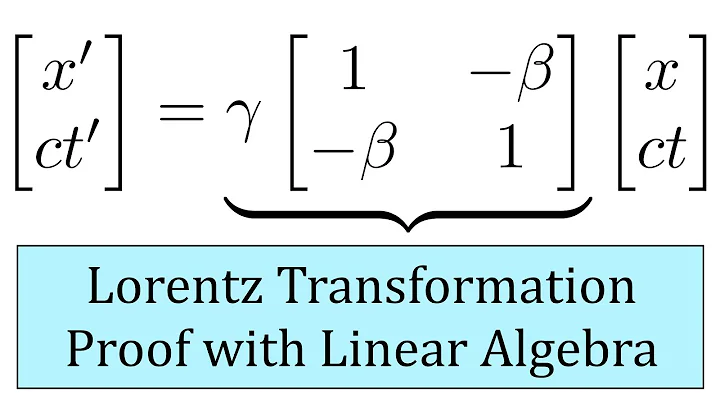Editor | Radish Skin
Polymer electrolytes are promising candidates for next-generation lithium-ion battery technology. Large-scale screening of polymer electrolytes has been hampered by the enormous cost of molecular dynamics (MD) simulations in amorphous systems: the amorphous structure of the polymer requires multiple resampling to reduce noise, while the slow relaxation of and requires relatively large Long simulation times are required for convergence.
Here, MIT researchers accelerate screening using a multi-task graph neural network that learns from large amounts of noisy, unconverged short MD data and small amounts of converged long MD data. They achieved accurate predictions of 4 different convergence properties and screened a space of 6247 polymers, which is orders of magnitude larger than previous computational studies.
Additionally, the researchers extracted several design principles for polymer electrolytes and made them available to the community as an open data set. The study shows that the method can be applied to a wide range of material discovery problems involving modeling complex, amorphous materials.
The research was titled "Accelerating amorphous polymer electrolyte screening by learning to reduce errors in molecular dynamics simulated properties" and was published in "Nature Communications" on June 14, 2022.

Research Background and Dilemmas
Polymer electrolyte is a promising candidate for next-generation lithium-ion battery technology due to its low cost, safety, and manufacturing compatibility. The main problem with current polymer electrolytes is their low ionic conductivity, which limits their use in practical applications. To overcome this limitation, researchers in the field are exploring new polymers through experiments and atomic-scale simulations.
However, due to the amorphous nature of polymer electrolytes and the diversity of time scales involved in their dynamics, simulations of ionic conductivity are very expensive, greatly limiting the ability to employ high-throughput computational screening methods.
Note that although some polymers have crystal structures , and past studies have performed large-scale screening of crystalline polymers via density functional theory calculations; screening for polymers with lower crystallinity will require more Expensive molecular dynamics (MD) simulations are used to sample equilibrium structure and dynamics.
For example, a recent study exploring amorphous polymer electrolytes with classical MD simulated only about 10 polymers. In contrast, studies applying machine learning methods to literature data have been able to explore a larger chemical space but have been limited by the diversity of polymers studied in the past. Exploration beyond known chemical space will require significantly accelerated computational screening of polymer electrolytes.
There are two main reasons why modeling the ionic conductivity of polymer electrolytes with MD is computationally expensive.
First, the amorphous structure of the polymer electrolyte can only be sampled from a random distribution using e.g. a Monte Carlo algorithm, but this initial structure has a significant impact on the simulated ionic conductivity due to the lack of ergodicity in MD simulations. Therefore, multiple simulations starting from independent configurations are required to correctly sample the phase space and reduce statistical noise.
Second, the slow relaxation of polymers requires long MD simulation times to achieve convergence of ionic conductivity (approximately 10 to 100 ns), and thus the computational cost of each MD simulation is also high.
Practical Pathways
Machine learning (ML) techniques have been widely used to accelerate the screening of ordered materials, but most previous studies implicitly assumed that the properties used to train ML models are deterministic, unbiased generated by the process. However, MD simulations of complex materials such as amorphous polymers are stochastic in nature, and running repeated simulations to obtain data with low statistical uncertainty is impractical at large scales due to large computational costs.
Another approach is to reduce the accuracy requirements of individual MD simulations and learn to reduce random and systematic errors using large amounts of less expensive but imperfect data. It has been previously demonstrated that ML models can learn from noisy data and recover true labels for images and graphics. Past work has also shown that systematic differences between datasets can be learned by employing transfer learning techniques.
Inspired by these results, MIT researchers wanted to significantly reduce the computational cost of modeling polymer transport behavior by employing a noisy, biased simulation scheme with short, unconverged MD simulations.

Diagram: Polymer spaces and learning frameworks. (Source: Paper)
In this work, researchers accelerate high-throughput computational screening of polymer electrolytes by learning from large amounts of biased, noisy data and small amounts of unbiased data from molecular dynamics simulations. Although the dependence on the initial structure leads to large random errors , they performed only one MD simulation for each polymer and learned a shared model across polymers to reduce random errors and recover the results obtained from repeated simulations. real characteristics.
To reduce long MD simulation times, they performed a large number of short, non-converged MD simulations and a small number of long, converged simulations. Then, multi-task learning is employed to learn the correction from short simulation properties to long simulation properties.

Illustration: Symptoms of correcting system errors. (Source: paper)
The researchers found that the model's prediction error for real properties was smaller than the random error from a single MD simulation, and it also corrected for systematic errors from unconverged simulations better than linear correction.
Combining the reduction of random and systematic errors, the researchers successfully screened a space of 6247 polymers and discovered the best polymer electrolytes from this space, compared to long simulations of directly simulating each polymer. , which is equivalent to an acceleration of 22.8 times.
What exactly did
The researchers performed a large-scale computational screening of polymer electrolytes by learning to reduce random and systematic errors from molecular dynamics simulations in a multi-task learning framework. Their screening showed that the PEO-like structure is the optimal structure for a broad class of carbonyl polymers.
Although the results may not seem surprising as PEO has been one of the best polymer electrolytes since its discovery in 1973, it shows the advantages of PEO-like polymers over the very diverse chemical structures . The only restriction on the polymer candidates was that they had a carbonyl structure, and the rest of the structure was randomly sampled from a large database of drug-like molecules with little human bias.

Illustration: Screening of polymer electrolytes. (Source: Paper)
Since the PEO substructure automatically emerged from the candidates, this shows that the PEO substructure has an advantage over almost all other types of chemical structures in the diverse database due to the presence of carbonyl groups in the polymer. This result may explain why PEO remains one of the best polymer electrolytes, despite efforts in the community to find better candidates. Several potential directions remain open for the discovery of better polymer electrolytes than PEO.
The first was to find polymer electrolytes that achieve optimal conductivity at very high salt concentrations. Conductivity generally increases with increasing salt concentration, but ion aggregation and reduced diffusivity can reduce conductivity at high concentrations. Their screening maintained a constant concentration of 1.5 mol/kg LiTFSI for different polymers, but some polycarbonate electrolytes showed advantages at extremely high salt concentrations.
The second is to explore polymer chemistry outside of this research. Due to limitations of the Monte Carlo program used to generate the initial configuration, their simulations did not include polymers with aromatic rings. Recent studies have proposed the potential of polymers with highly brittle and aromatic rings as polymer electrolytes due to the decoupling of ionic conductivity from structural relaxation.Backbones containing different Lewis acidic heteroatoms or non-carbonyl motifs could also yield better polymer electrolytes.
Large-scale screening is possible by using a multi-task learning framework to learn from imperfect data, significantly reducing the computational cost of a single simulation. The ability of neural networks to learn from noisy data has been extensively studied in machine learning and has recently been applied to reduce the signal-to-noise ratio of force microscopy with excited piezoelectric responses in materials science.
Despite the widespread use of graph neural networks in material discovery, there has been less research on random errors in training data, possibly because previous research has focused on simple materials with much smaller random errors.

Illustration: Performance of reducing random errors. (Source: paper)
Researchers have shown that random errors can be effectively reduced by learning graph neural networks across different chemistries, even if they are large per simulation. It provides a potentially general method to accelerate the screening of complex materials whose structures can only be sampled from distributions, such as amorphous polymers, surface defects, etc., because only one simulation is required for each material, whereas Not multiple simulations.
The systematic error reduction demonstrated in this study is closely related to transfer learning research aimed at combining data from different sources. The researchers' unique contribution in this work is to demonstrate the value of short, unconverged MD simulations in the context of materials screening.

Illustration: 6247 Relationship between several descriptors of a polymer in the search space and predicted 50 ns MD lithium ion conductivity. (Source: paper)
They found that systematic errors between 5 and 50 ns simulated transmission properties can be corrected with a small number of 50 ns simulations, which can be generalized to other types of materials, properties and simulation methods. Because their multi-task GCN architecture uses 5 ns attributes as additional input to predict 50 ns attributes, it is also conceptually similar to delta-learning methods.
Overall, the researchers hope that the reduction in random and systematic errors observed in this work can highlight the value of imperfect, cheaper simulations of materials screening that may have previously been overlooked. If cheap, noisy, and biased simulation methods can be identified, similar methods can be used to screen a wider class of complex materials.
paper link: https://www.nature.com/articles/s41467-022-30994-1





















